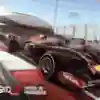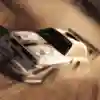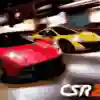Gaming
Games
Inside Codemasters: Honing racing games since ’86
We talk to Codemasters about the secret behind their sustained success, and what the future holds...
Codemasters is a name familiar to any gamer worth their salt, but for a development studio that is so beloved, they’re remarkably hard to find. Hidden away at the end of a farm track near the market town of Southam in leafy Warwickshire, you’ll find an unassuming set of farm buildings, packed full of coders and designers working on Codemasters’ latest creations.
The studio has been going for nearly 30 years now, and whilst the British devs have forged a reputation as racing game experts, they’ve never been shy at turning a hand to other genres.
“I can’t believe the things we’ve made in that time,” says Codemasters creative director James Nicholls. “I’ve packed in so much stuff. I think there’s only one year where I haven’t released a game since I’ve been here.”
“That’s a good thing,” he adds. “Releasing games is the best bit.”
Whilst Nicholls has been at Codemasters for the last seven years, senior executive producer Clive Moody has worked there for the last 15. It says something about Codemasters’ longevity and success that both have been with the studio for so long, so we sat down with both of them to get their thoughts on what makes Codemasters special.
Many studios seem to be treading a fine line between success and closing their doors. How has Codemasters managed this longevity and success? Is there a secret to it?Clive Moody: I don’t know if there is a secret as such. At the end of the day you have to be making games that people want to play. The reason a lot of studios go out of business is that they put stuff out that doesn’t resonate with gamers at that particular time. I think you have to be smart about what the market is doing, what the gamer wants and then deliver on that. If there is a secret, that’s it – but it’s common sense more than anything.
James Nicholls: People think we’re a huge company, but we’re not really, I think we’re the perfect size in terms of personnel – it means we’re flexible enough to move with the times. Because of the games we’re putting out, people assume they’re made by a massive group of people, but that’s not the case. It must be a good thing though!
The company’s just kept evolving, and adapting the games we’ve made. If you look back at the games we’ve released, we’ve had a consistent thread of racing games, but the nature of those games has changed quite a bit. Colin McRae and the TOCA games are very different to something like GRID 2. We’ve evolved with the times.
CM: I think it’s worth giving a shout to the people who work here. We’re not the biggest company in the world, but the people we have are very passionate about the work they do, and very talented across all disciplines. I think that helps a lot – we’re not a big company so people here always feel like they’re making a difference. Everyone is an important cog in the machine, and that gives people that extra level of motivation.
Is that also because of the size of the company? How many are you in total?JN: We’re around 400 to 450 people globally I’d say. Because of the way we work and the types of game we work on, we’re quite open internally. So if someone is really good, we give them the chance to make their mark and progress their skills and their career.
CM: Without getting too sales pitchy about how we run stuff, we give people a lot of opportunities and ownership of their work – we don’t pigeonhole anyone.
Has the ethos of the studio changed at all since the founders (Richard and David Darling) left the company?CM: I remember how it used to be! The key ethos was always quality, and that hasn’t changed a bit – the goal is always to produce the very highest quality games we can, that speak to our audience. In that sense, I don’t think there’s any difference. People come and go, and some have different ideas or ways of working, but fundamentally there’s always that common goal.
How many teams do you have working here now? CM: We’ve got the studio in Southam, which is where DiRT, GRID, F1 and all our racing titles are developed. There’s a digital studio here too, which is working on the Overlord game at the moment. And then there’s our mobile studio in Malta, where they’re working on a mobile card battling game. Think Hearthstone but military. Oh, and there’s a mystery team in Birmingham that I can’t talk about, except to say that they exist! Between all of those studios and our external art studio in Kuala Lumpur, we’re pretty nicely spread out, but Birmingham is still home.
How do you go about deciding what projects to work on?CM: We start with the games that we’re known for. Going back to McRae for example, and the way that franchise has evolved into DiRT, it’s a very established brand and not one that we’re going to give up on anytime soon! We have our audience there, so it’s a no-brainer – the nuance really is in directly what we’re trying to do with it. If you take something like DiRT 2, which is about the extreme aspect of offroad racing, that’s a different focus to DiRT Rally, which is more an accurate and authentic rally experience. So the decision there isn’t in what game we make in terms of the brand, but more about what experience we want people to have with it. It’s a very broad question, but it’s all about understanding the audience and then finding a balance between what they want, and what we think we can deliver for them.
JN: If we’ve done something over and over again, people are going to start getting bored of it. There’s a lot of crystal ball gazing in my job in seeing where the trend and expectation is going. But also, you have to try and find the right balance, between doing something your audience will be excited about, but also something that the team at Codemasters are going to get fired up about as well. If we made the same game every time, we’d get just as bored making it! If you look back through the GRID and DiRT series over the last five or six years, we’ve done something different with each release. We’re constantly looking ahead at the next thing, and trying to give people the things they will want but don’t realise yet.
Do you find that you lose fans when you change styles during a series, like DiRT for example?JN: You can’t please everybody – you have to accept that. As a games designer, I want as many people as possible to play the games I work on, but it all boils down to what type of game you’re trying to make and who you’re trying to make it for. With DiRT Rally we’re trying to focus on authenticity, and we know that we’ll make it perfect. When it comes to making a bigger, broader game, you have to start making trade-offs, because not a lot of people will get into a really difficult rally sim.
Whenever you release a game, some people will like it and some people won’t. But you’re also broadening the number of people being introduced to that type of game, so if you get it right, you’re gradually pulling more and more people into that experience.
What has the feedback been like for Toybox Turbos? We think it blindsided everyone a little bit...JN: Toybox Turbos did okay for us. It probably did as well as expected given the platforms it was on, and the time it arrived. It certainly shows there’s an appetite for a Micro Machines-style game that isn’t in any way affiliated with Micro Machines!
You’re known for racing games, it’s fair to say that Overlord doesn’t really fit in with that portfolio! How did that come about?JN: It’s been a work of passion from our digital focus team really. Obviously Overlord is a much-loved IP within the studio, so when the team decided to work on it, they didn’t have to do much arm-twisting to get others to help out! They’re working really hard on it right now, and there’s lots of humour coming back into it. The whole thing has been great to see, it keeps everyone fresh and challenging themselves to try different things. It’s good for the team to be able to do something other than racing. The beauty of our set up is that people can move between teams and projects within the studio.
CM: Opportunities to go and do something different are very valuable. If some of those guys finish what they’re doing and come back into the racing studio, they’ll have a lot of experience, as well as a new outlook that they can apply to the racing title in some way.
It harks back to when you used to dabble in wider range of genres. Do you see Codemasters expanding again in the future?CM: I think so. We’re doing fewer games at the moment within the business, but we’re doing the right games for Codemasters. We have a heritage and a lot of knowledge when it comes to making racing games, but we still have lots of skills from making games in other genres. James (Nicholls) is a perfect example of that, having worked on Operation Flashpoint (a first-person military simulation set in the Cold War). So I think we will in the fullness of time, but only if we can find the right games to make and we know there’s an audience that wants them.
GRID Autosport followed hot on the heels of GRID 2. Will we see GRID hitting Xbox One and PS4?JN: I think right now, our focus has got to be on DiRT Rally and getting that right. Also, from the GRID point of view, we did GRID 2 and GRID Autosport back to back, so it’s a good time to take a breather and come back to GRID when the time is right. We both worked on both of those games and we dearly love them, but we won’t be working on GRID for the immediate future.
Codemasters has been fairly late to adopt the new consoles – will we see you embracing Xbox One and PS4 more in the future?CM: We’ll definitely be embracing them a lot more, but I don’t think being late or being perceived to be being late is going to harm us. The install base is getting bigger and bigger, so when we do come in we’ll have a lot of people with the consoles in their homes, waiting for Codemasters games to play. I’m sure we’ll see that with F1 pretty imminently, and I think when we can get something like DiRT onto console, that will go great guns too. It’s about giving ourselves the time and space to build games with the right technology so we can put the right game out there. Rushing our games to market would probably have been the wrong move for us.
It’s worth remembering that we certainly weren’t present on day one of the last console generation either. It was a good 18 months into the lifecycle before we put out DiRT, which was our first title on that generation. We were definitely a bit cautious in terms of what the uptake was going to be on PS4 and Xbox One. There was lots of talk around the death of console gaming, everyone was turning to mobile and tablets. I think it’s safe to say that’s not a worry anymore, the market’s more buoyant than I’ve seen for a long time, and we’re seeing that in console uptake. It’s the right technology to build our games on – F1 looks beautiful and it’s a testament to the tech that we have now that enables us to build those games.












